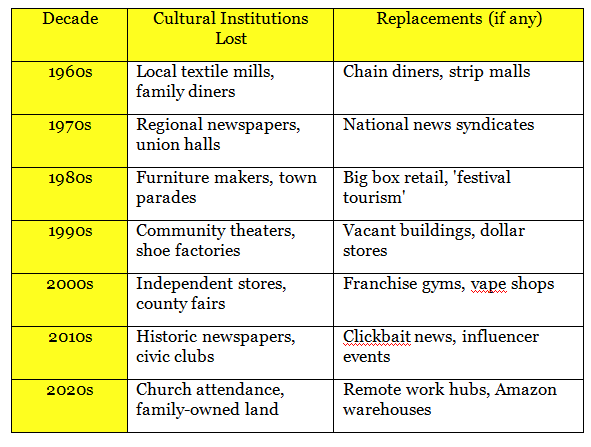The Foothills Corridor: Chapter 8 - Why Foresight Matters in Forgotten Places
Foresight is a luxury in most places. In the Foothills Corridor, it’s a necessity. When a region has been dismissed, depleted, and deemed irrelevant by outsiders, waiting for someone else to plan its future isn’t an option.
Foresight—thinking ahead, preparing for what’s coming, and shaping what could be—is the only way to build power in places that have been stripped of it. Foresight isn’t optimism—it’s strategy.
But in many forgotten places, planning has long been reactive. Firefighting, not forecasting. Filling potholes instead of building paths. That’s not because people here lack intelligence or creativity. It’s because they’ve lacked support, investment, and systems that reward long-term thinking.
Now, that has to change. Because if the Foothills doesn’t claim its future, someone else will—again.
The Cost of Looking Down, Not Ahead
For decades, civic life in the Foothills was consumed by short-term survival: How do we balance this year’s budget? How do we keep the school open? How do we replace this closed plant? Those are real questions—but they’re also symptoms of a region in defense mode.
Without foresight, you miss the pivot points. You don’t see broadband until you’re behind. You don’t build housing until the workforce is gone. You don’t train students for tomorrow’s jobs until tomorrow arrives—and they’ve already left.
That’s what happened here. And it’s still happening in too many counties. The region isn’t just competing for jobs or grants. It’s competing for relevance in a global economy that rewards speed, innovation, and cohesion.
Figure 8.1 –
Timeline of Cultural Erasure in the Foothills (1960–2020)
This timeline reflects the gradual erosion of cultural identity in the Foothills Corridor region from 1960 to 2020. It contrasts the community-centered institutions that once anchored life in the region with the impersonal or commodified replacements that have taken their place over time.
Foresight is Not Guesswork
Real foresight isn’t about making predictions—it’s about tracking signals and preparing for a range of futures. It’s the difference between playing checkers and playing chess. And it’s especially vital in a region like the Foothills, where the past is heavy, the present is fragmented, and the future is unwritten.
Foresight means asking:
What trends are emerging that could affect us?
What early signs suggest where the economy is shifting?
What investments today might pay off in five or ten years?
What happens if we do nothing?
It means noticing the woo and faint signals before they disappear. It means acting on weak signals before outsiders co-opt them. It means being proactive, not reactive, even when budgets are tight and energy is low.
The Power of “What If?”
Foresight opens the door to imaginative, place-based solutions. What if the Foothills became a national leader in regenerative agriculture? What if abandoned factories became maker hubs for rural tech? What if regional healthcare systems coordinated to build not just hospitals—but health resilience?
These questions don’t require permission. They require courage.
And in regions that have been written off, courage is capital.
Tools and Tactics for Rural Foresight
You don’t need a think tank to practice foresight. You need committed people and a few basic tools:
Signal tracking: Catalog local examples of woo, faint, and weak signals. Update them quarterly.
Scenario planning: Ask what happens under different future conditions—economic growth, climate impact, population shifts.
Community visioning sessions: Invite residents to describe their desired future. Use visuals, stories, and maps—not just spreadsheets.
Youth councils: Bring in the next generation as active voices in what comes next.
Feedback loops: Track what works, adapt what doesn’t, and share across county lines.
These are not high-cost efforts. They’re high-return investments in a culture of foresight.
Why It Matters Most Here
The Foothills Corridor is exactly the kind of place that can lead on foresight. Why? Because it has lived through what happens when you don’t.
We know what decline looks like. We know what it costs. That experience can become our advantage—if we turn our hindsight into foresight.
Other regions are scrambling to figure out how to deal with automation, energy transitions, and remote work. The Foothills already has the scars. It also has the space, the talent, and the hunger to build something better.
What it needs now is the confidence to look ahead—not with fear, but with clarity.
A Future Claimed, Not Given
The story of the Foothills isn’t over. But whether it becomes a story of reinvention or a cautionary tale depends on what happens next. And what happens next depends on whether this region chooses to lean forward or hunker down.
Foresight is the hinge. It’s the bridge from extraction to empowerment, from survival to strategy. And in forgotten places like this, it’s not optional.
It’s the beginning of everything that matters next.


